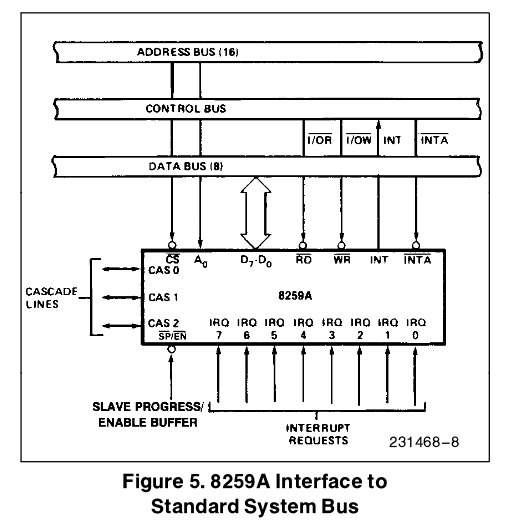I am in the process of writing a driver for the Intel 8259A PIC and using the corresponding datasheet for reference.
The datasheet contains a picture of the controller and its connection to the system bus:
I roughly understand the pins and connection but I cannot wrap my head around one: the A0 line.
It has two descriptions in the datasheet. The first one is as follows:
A0
This input signal is used in conjunction with WR and RD signals to write commands into various command registers, as well as reading the various status registers of the chip. This line can be tied directly to one of the address lines.
Taking a look at the ICWs (Initialization Command Words), I can understand how the A0 is used to "[...] write commands [...]." Address lines are designated with a leading "A" and a trailing number, which equals their position in the array of address lines, beginning at 0. Therefore, A0 means the very first address line of the address bus.
But address lines are used to address primary memory, that is, RAM. The Intel 8259A does not access RAM directly, though.
So why is that bit called A0 and how can it "[...] be tied directly to one of the address lines [...]"?
And why 0, specifically, if the second description says this:
A0 ADDRESS LINE: This pin acts in conjunction with the CS, WR, and RD pins. It is used by the 8259A to decipher various Command Words the CPU writes and status the CPU wishes to read. It is typically connected to the CPU A0 address line (A1 for 8086, 8088).
(2nd emphasis added.)
So, it's A1 for x86 and A0 for those other 8259A-compatible processors only? Why A1 for x86 then? That means powers of 2, which I do not see the use for in this context.
What's the purpose of that A0 bit and its name here?

